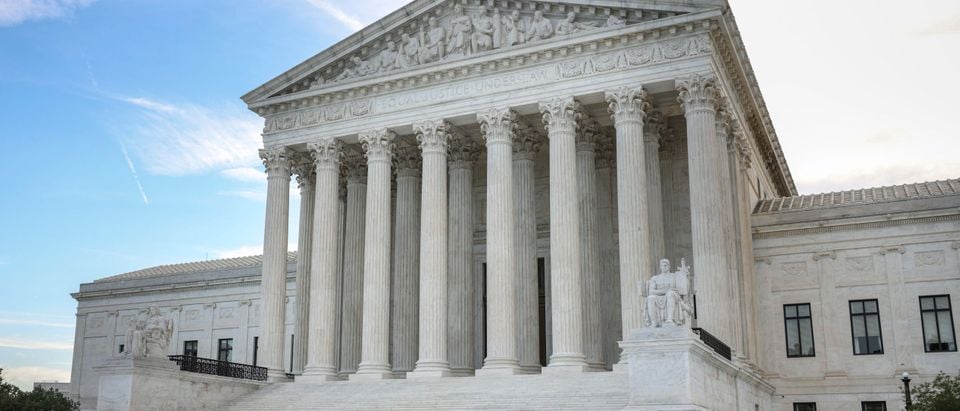The Supreme Court is set to hear oral argument on Feb. 28 as to whether the U.S. Environmental Protection Agency can regulate emissions of greenhouse gases from coal plants under the Clean Air Act. It’s an opportunity for the Court to make right the gross constitutional error it committed in 2007.
The convoluted saga begins in 1998 when the global warming-fretting Clinton administration EPA prepared a legal opinion concluding that it had the authority to regulate emissions of greenhouse gasses pursuant to the Clean Air Act, despite the fact that Congress had never expressly authorized the agency to do so.
In 1999, a number of green activist groups petitioned the EPA to implement that legal opinion. Although the Constitution provides the right to petition the government, the Constitution does not require that the government even respond to such petitions. One reason agencies don’t respond is because if they do, they can be hauled into court over their response under a law called the Administrative Procedures Act.
For some unknown reason, the Bush administration EPA decided to seek public comment on the petition in 2001 and then denied it in 2003. The activist groups, joined by several (blue) states, then sued EPA in the U.S. Court of Appeals for the DC Circuit. That court ruled 2-1 in 2005 against the activists who then petitioned the Supreme Court to hear the case.
In the awfully reasoned 2007 decision in Massachusetts v. EPA, made amid the global warming hysteria surrounding the 2006 release of Al Gore’s movie “An Inconvenient Truth,” the Court held that the EPA did have the authority to regulate greenhouse gases — regardless that Congress, which under the Constitution is solely responsible for writing the laws for the Executive Branch to implement, never authorized EPA to do so.
Although the Bush administration never got around to exercising its new authority invented out of thin air by the court, the Obama EPA grabbed the bull by the horns. In 2015, the Obama EPA issued its Clean Power Plan, a regulation where states were tasked with reducing power plant emissions by 30% by 2030.
The coal industry sued, and the Supreme Court, in Justice Antonin Scalia’s final decision before his unexpected death, stayed the implementation of the Obama rule in February 2016. The rule remained stayed when the Trump EPA took over in 2017.
The Trump EPA unfortunately lacked the courage to just get rid of the Obama Clean Power Plan altogether and instead, taking a narrow view of EPA’s authority to regulate greenhouse gases under the Clean Air Act, replaced it with something much less draconian called the Affordable Clean Energy rule. Challenged by green activist groups, the Trump rule was overturned 2-1 by a three-judge panel of the EPA-friendly Court of Appeals for the District of Columbia Circuit in January 2021. A majority of the panel held that EPA had more authority to regulate greenhouse gases under the Clean Air Act than the Trump EPA had imagined. So here we are now with all the parties’ challenges to EPA regulation of greenhouse gases before the Supreme Court.
Leading a group of 20 or so states West Virginia has asked the Court to overturn the January 2021 DC Circuit Court decision on the narrow grounds that Congress did not authorize and never intended for EPA top regulate greenhouse gases under the specific section of the Clean Air Act relied on originally by the Obama EPA.
That assertion is true, but it is much too narrow in scope.
Congress never intended for the EPA to regulate greenhouse gases at all. You don’t have to take my word for it. That is what the late-Rep. John Dingell, a key co-author of the Clean Air Act, stated in 2014 at a congressional hearing.
Keeping in mind that Congressman Dingell supported action on climate, these are his words at the hearing:
“Like most Members of the Committee, I think the Supreme Court came up with a very much erroneous decision on whether the Clean Air Act covers greenhouse gases. Like many of the members of the Committee, I was present when we write that legislation and we thought it was clear enough that it did NOT [Dingell’s emphasis] and we did not have to clarify it, thinking that even the Supreme Court was not stupid enough to make that finding [i.e., the ruling in ruling in Massachusetts v. EPA].”
But Congressman Dingell was wrong, and the Supreme Court was in fact “stupid enough” on a 5-4 basis.
Given that Congress is entirely responsible for making the laws and the Executive Branch’s responsibility is entirely limited to implementing the laws that Congress writes, it would seem key to the present controversy that Congress never intended for EPA to regulate greenhouse gases through any provision whatsoever of the Clean Air Act. So even West Virginia’s view of the matter is much too narrow.
If Congress wants the EPA to regulate greenhouse gases, then it must explicitly say so in law. Until then, the Supreme Court has no business doing anything but completely overturning Massachusetts v. EPA.
Steve Milloy is an attorney, publishes JunkScience.com and is the author of “Scare Pollution: Why and How to Fix the EPA.”












